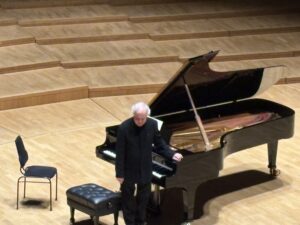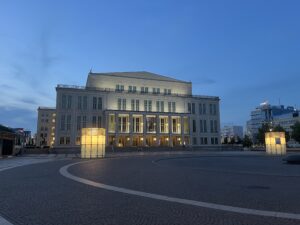
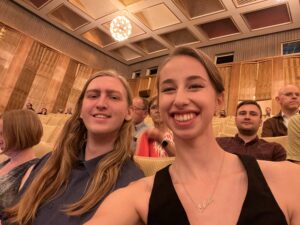
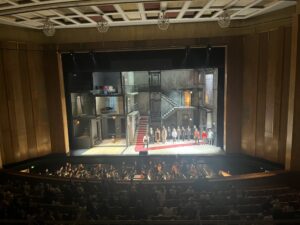
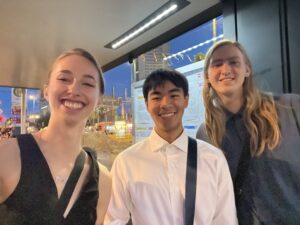
Oper Leipzig take #2: Mozart’s Don Giovanni. After a thematically confusing (occasionally disturbing) performance of Pique Dame, I can safely say Oper Leipzig redeemed itself with its performance of Don Giovanni. Having read the original play the opera is based on (actually a Spanish work called “Don Juan Tenorio y convidado de piedra) in my Spanish Literature class in high school, this was a very full circle moment for me. Before we read the play aloud, we chose roles, none of which we were briefed on beforehand. I played Don Juan (who became Giovanni) and by the end of the play my character had slept with 3 women, killed one of their dads, and then been killed by his ghost. Suffice to say, it was a lot to take in.
When I saw the chance to see Don Giovanni, I jumped on it, along with Vito and Lucien! The standout singers in our opinions were Don Ottavio (Dalla sua pace, one of his arias, made me tear up) and Donna Anna, who had an incredibly powerful and resonant voice. Luckily for us though, every singer across the board was fantastic and perfectly cast to their character. I especially loved the directorial choice made with regards to Leporello. He was dressed as a Doordash delivery guy when he first entered which made his carrying out of all of Don Giovanni’s ridiculous tasks even more absurd (and surprisingly, it wasn’t too cheesy of an effect)! Then, every time I passed a bike with a food delivery package, I chuckled thinking about Leporello (pretty good marketing).
The set design also made this production incredibly special. I’ve attached the best photo I took of it on this post to give you an idea of the layout. Basically the stage was designed to resemble Don Giovanni’s mansion with plenty of secret passageways and hidden entrances. Getting to see the multiple characters in their respective rooms during the opera was really well blocked to not be too much for the eye but just enough that if you focused on one character, you would look back at the others and be occasionally surprised by their new task. One strong example of this was when they surreptitiously replaced the stone bust depicting Donna Ana’s dead father with the real live singer so that the statue miraculously came alive! The lighting during any of the ghost scenes was really exciting as well — the whole stage was covered in this smoky green hue that we only got to see twice in the whole run — causing the effect to not feel overused.
From a more political standpoint, I think the piece dealt with themes of sexual assault against women well. Part of that is of course derived from the original libretto, but I appreciated how differently the characters of the three women (Ana, Elvira, and Zerlina) were portrayed (with some being more stereotypically innocent than others) and yet eventually unified in their efforts against Don Giovanni.
All in all, I absolutely loved the production and it’s now one of my favorite operas!
PS: Watch Amadeus if you haven’t already!
Gabrielle

